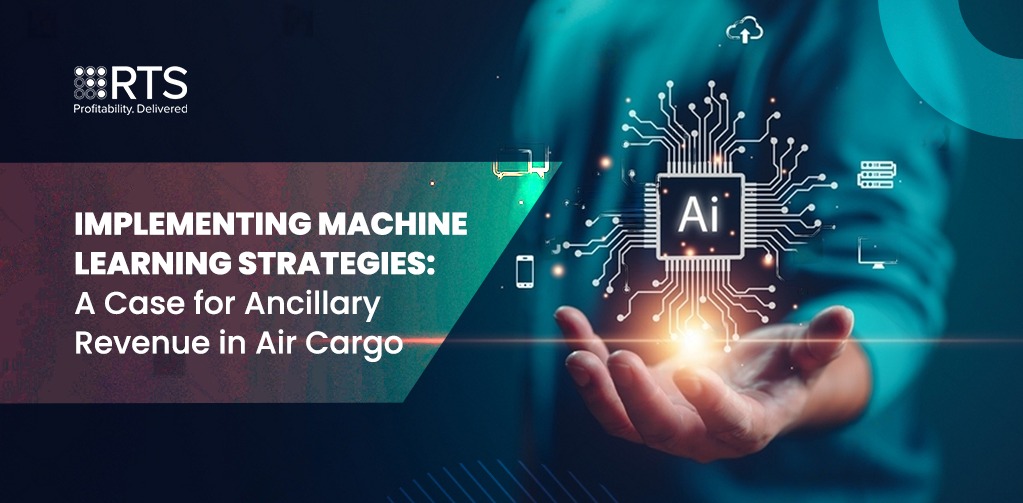When discussing airline ancillary revenue, the first thing that comes to mind is all the extras you pay during your travel experience; checked bags, extra leg room, wi-fi, seat selection and more. This is a vital source of revenue for an airline as it allows to not only diversify the revenue stream, but also represents an opportunity to hedge against some of the innate uncertainty of the industry.
Economic downturns, high operating costs, and downward pressure on ticket fees are some of the reasons why ancillary revenue has become a great strategy to bring a level of stability which the airlines can count on.
However, airlines have more businesses than transporting passengers. The pandemic darling, the cargo business has its fare share of economic challenges. During the pandemic, cargo showed itself as the saving grace in many airlines that reacted quickly and knew how to leverage their network and equipment.
In a post pandemic world; however, cargo is back to business as usual and it faces familiar challenges, pressure on yield, economic slowdown and suboptimal schedules – from a cargo perspective.
With so much in common with the passenger sphere, we set out to identify if some of the learnings and experiences can be replicated in the cargo world as well. The ancillary revenue tops the charts.
This would enable the cargo business to also reap the benefits from this strategy to the ultimate advantage of the airline.
In this blog post, we will discuss various algorithms that can be used to develop a product recommendation engine with the aim to find associations in the data and suggest special handling codes or commodities that are often purchased together to create upselling and cross-selling opportunities.
At RTS, we are using our own set of ML/AI based algorithms while shaping up the recommendation engine module as a part of our pricing solution – AcceleRate.
Before discussing specific algorithms, the first step in every data science project is to pre-process the data you will be working with, and perform EDA (Exploratory Data Analysis). This may comprise removing redundant data points followed by data transformation into sparse matrix which enables us to process the data with higher efficiency and speed. This helps us to organize the data into a suitable format and then apply any algorithm.
The Apriori Algorithm
The Apriori algorithm is a powerful tool for building a recommendation engine. The algorithm can be used to find patterns in user behavior and make recommendations based on those patterns.
In the context of the recommendation engine, the Apriori algorithm works by identifying frequent itemsets, and then generating association rules based on those itemsets. It can identify patterns and relationships between the different special handling codes or commodities used. This allows the recommendation engine to make recommendations for which special handling codes to use in order to increase revenue.
Generate association rules: Once the frequent item sets have been identified, the algorithm generates association rules from them. Association rules are rules of form A -> B, where A and B are itemsets. The rule indicates that if a transaction contains A, it is also likely to contain B. Here are the key components in this algorithm which evaluates the findings of frequent item-sets.
Support: Here, we measure the frequency of an item-set in a dataset, and it’s used to determine if an item-set is considered frequent.
Confidence:We quantify the certainty of an association rule, and it’s the ratio of the frequency of an itemset and its consequent to the frequency of the itemset alone.
Lift: This indicates whether two items are independent or dependent in a dataset, and it’s the ratio of the confidence of an association rule to the product of the probabilities of the itemset and its consequent. These measures are used to identify and evaluate frequent itemsets and association rules in the Apriori algorithm.
Deep Learning based approaches
These methods typically involve training neural networks on user behavior data, such as clicks, views, and purchases, to learn complex patterns in the data. The neural network can then use these patterns to make personalized recommendations for users.
Deep learning models can capture non-linear relationships in the data, making them well-suited for recommendation tasks where the relationship between user behavior and recommended items is complex. These models can also handle large amounts of data and can memorize the usage of Special handling codes for customers to create an upselling opportunity.
Overall, deep learning-based approaches offer a powerful and flexible toolkit for building recommendation engines that can effectively personalize recommendations for users and drive sales and engagement.
Content-based and Collaborative filtering
Content-based filtering analyzes the features of items and the user’s preferences to make personalized recommendations. It recommends items based on the similarity between the items and the user’s past behaviour. Collaborative filtering, on the other hand, analyzes the behavior of similar users to make recommendations. It recommends items by identifying users with similar preferences and recommending items that those users have liked or purchased.
Both content-based filtering and collaborative filtering have their strengths and weaknesses. Content-based filtering can handle new items and users effectively, but it may not capture the nuances of user preferences as accurately as collaborative filtering. Collaborative filtering can capture the nuances of user preferences, but it may not handle new items and users as effectively as content-based filtering.
To build a recommendation engine that effectively leverages both content-based filtering and collaborative filtering, you can use hybrid approaches that combine the strengths of both methods.
In conclusion, the blog post encapsulates a forward-thinking approach to leveraging data science techniques in optimizing cargo operations and revenue generation for airlines. By delving into the intricacies of recommendation algorithms and their potential applications in the cargo industry, the post offers a compelling argument for the adoption of data-driven strategies in the post-pandemic landscape. For this reason, at RTS we’re walking the walk and following up on our promise of delivering solutions that combine science and innovation to maximize our client’s potential.
